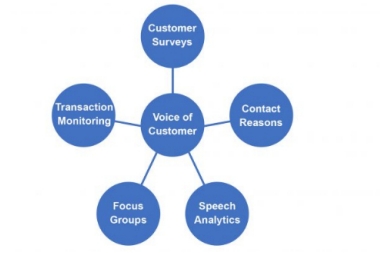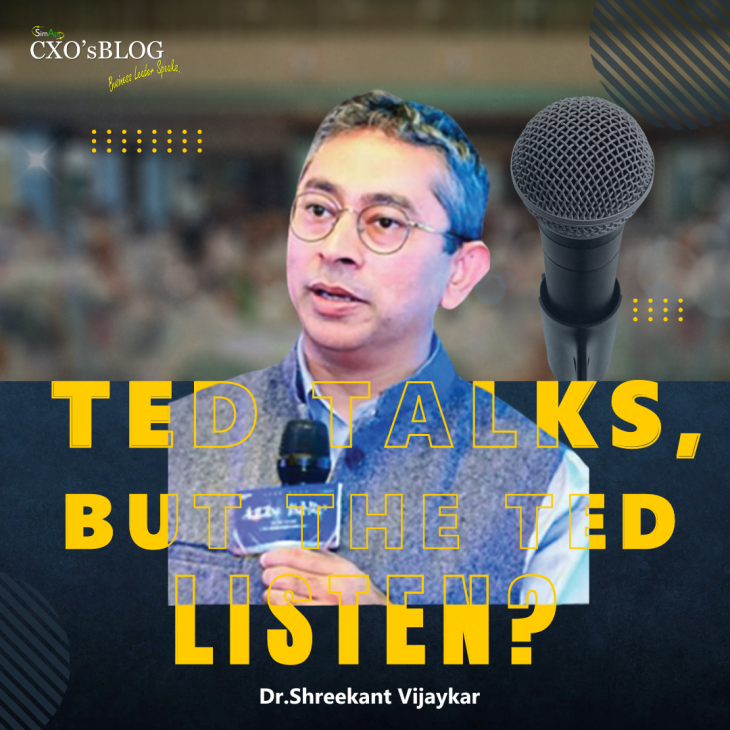Author: Dr Shreekant Vijaykar

Making a Robust VOC Mechanism for Customer Delight
A leading bank in Asia had commissioned us a few years ago for a short consulting assignment, where I got to know their marketing leader. What was extraordinary about her was that she would start each of her days by listening to customer calls from her call center for at least half an hour. She would tap into the system that recorded the calls and listened to a random bunch. This ritual was sacrosanct and part of her schedule every single day, and she was committed to it even during the days of travel. Now for some, this might seem extreme, but hopefully not shocking. Most leaders understand the value of listening to the Voice of Customer, or VOC, as it is called, and there is enough literature about why it is important to listen to the VOC. But truth be told, very few of us make it a point to listen to this VOC and act on it on a regular, proactive basis. Over the years, the nature of VOC and our relationship with the VOC has changed.
First, with social media, customers can make their voices heard on a larger platform and gain more visibility. There are both pluses and minuses of this. As much as these social networks have helped resolution, furthered societal causes, connected people, and created tangible, sustainable change, they have also created echo chambers, troll armies, armchair activists, choice-supporting biases, and arenas for shouting matches. This has affected our way of looking at VOC too.
Second, with more access to information and better designed self-service technologies (SST- see my last post), we see that customers feel more empowered. The purchase decisions are governed by a significant social WOM (Word of Mouth) and the service journeys followed by customers make use of several self-service and community-based channels. Case in point technical support for product companies like Microsoft and Apple now has a sizable chuck being done through self-service and company-encouraged user communities. Customers are connected, aware, and informed. This changes the way they interact with us and provide us with VOC.
Third, the awareness about and expectations around customer experience keeps changing. We have come a long way from the days where customers would be delighted if someone just picked their phones up (sadly, this is still a hygiene factor in several industries and getting through to contact center agents is harder than going from Manali to Leh on a bicycle). In general, customers expect a resolution to their issues or queries with minimal effort or hassles. What is more, what happens in one industry influences the VOC in another unrelated industry, All this leads to an urgent and critical need within firms for a clear strategy and approach to listening to VOC, without which we are walking blindly in a minefield. Without listening to VOC, we do not understand what drives customer satisfaction or their churn to our competitor. We remain unaware of buying signals, early warning indicators, and factors that affect customer sentiments. Literature is full of examples of companies that ignored these and suffered business consequences. So, to begin with, let me list down at least five sources of VOC. We have seen them working for our clients, and they have become more and more effective in the recent times. This is not a comprehensive list, but it is a good start for anyone willing to “listen” to the customers.

Customer surveys
This is an obvious starting point. Yet we find that the typical customer survey approaches are plagued with several deployment challenges and make them ineffective for getting the real VOC. For example, survey samples are biased (e.g., sent only to customers whose issue is resolved), or are insufficient in size (e.g., firms consider an x% of customer base surveyed without considering the statistical implications),or are sent after along period of time from the actual “moment of truth”(which make the survey a checklist activity without real implications).
In most cases, response rates of email surveys and such deferred methods are miniscule. Surveys conducted through messaging services (e.g., SMS, WhatsApp) usually provide very little information. For example, only one question, usually about satisfaction levels, is asked, without getting any details of why customer rated us so. In some cases, surveys are too long and repetitive, and cause survey fatigue for customers.
In places where survey scores are linked to staff performance, we unfortunately see all sort of “gaming”‘ practices, right from staff members rigging the system with fake scores, IDs, and data, to them influencing customers by “begging” for good scores. Some of you might have experienced filling a Zomato or Yelp rating, with the serving staff hovering over your shoulders. It takes the “feedback” out of the customer feedback process.
Yet, we find that having some sort of customer survey is better than having none. Consider the failure modes I have listed here and see how you can design a better customer survey mechanism (or ask us! COPC Inc. has done several consulting assignments in fixing customer survey mechanisms for our clients across the world).
Contact Reason Codes
Another traditional method of listening to VOC and gathering data about customers is through our staff capturing reasons for contact and the CRM (customer relationship management) system that is used to track customer transaction.
What we recommend in this case is to give due thought to what is getting tagged with the transactions. Most CRMs allow you to tag a “transaction type’, but this is going beyond the type of contacts. The transaction type could be, say, “billing”, but the reason for contact or contact trigger could be that the customer received a bill that was confusing. So, the contact reason is the poorly designed bill.
It is not only about the tool, too. We need to ensure that our staff is trained and able to identify the contact reasons and able to capture these consistently. This requires a focused management effort and governance, but the payoff is significant. A related suggestion is to build questions related to the contact reasons and contact triggers in the customer surveys (see above). This helps in taking an analytical approach to understand why customers contact us.
Speech and Text Analytics
The advances in natural language processing and other technologies have led to the possibility of more commercially viable analytic engines that can perform speech and text analytics for you and parse a large amount of customer data and comments to provide you with patterns in VOC.
Speech analytics is a technology that automates the process of listening to customer interactions, recognizes spoken or written words, and sometimes also analyze the emotional character of speech and text. Three types of insights can be drawn out of speech analytics solutions:
(a) insight related to customer communication that the company does, e.g., “when does the offer expire? It isn’t clear.”
(b) Insights related to which channels are working or doing poorly, e.g, •1 was stuck in your phone system for a longtime·.
(c) Process related insights which tell us if any processes are broken, e.g,”I never received that call back your agent promised”.
While the technology is improving every single day, the accuracy is still at a nascent stage, especially for regional languages and dialects. For the tools to be effective, they need to be housed in a system and processes that takes this data, analyses patterns and gives you specific, tangible actions to take.
Customer Focus Groups
While it is great to get technology to work for you, no amount of new tech can replace the value one gets by “‘actually listening- to customers. Conducting a Focus Group is one of the most valuable sources of information into customer research. They can provide insights and perceptions about what drives customers to contact you, buy your products and services, what they think about some new offers and promotions or channels you have introduced.
How does one conduct customer focus groups?
You can gather a group of people, representative of your key demographic, and engage with them in topics of discussion that can drive the insights you are looking to get. It is important to conduct multiple focus groups with different participants to get as many insights as you can. Of course, this can be more challenging logistically compared to other sources of VOC, especially in the post COVID and socially distant world.
But they can be very effective in getting you in-depth VOC with specific, actionable insights. I remember conducting a customer focus group for a digital television provider once. By the end of the session, the TV executives knew more about their own strengths and weaknesses compared to the primary competition than they could have ever imagined or expected.
Transaction Monitoring
One of the sources of listening to VOC that is traditionally available within firms, but is hardly used, is the quality audits. We have armies of quality analysts listening to calls and reviewing transactions, and filling reams of papers and forms (now electronically), but most of these efforts are to ensure errors are identified and individuals making these errors are coached.
While this is useful in a way, the process of transaction monitoring can be used for a much bigger and effective purpose, that of gathering and analyzing customer feedback. This, however, requires a fundamental shift in the process of transaction monitoring from individual staff focus to customer focus. You need to train the quality analysts to identify the customer feedback while listening to the calls and reviewing transactions.
Why did the customer call? Was it required for the customer to call? What did we do? How could we have done it better? What product or service is selling? What is not? What are customers saying about our products and services? About our shops and retailers? About our competitors? We need to be able to instil this ability to look for customer feedback during transaction monitoring. Only then we will start capturing the VOC during the process.
As can be imagined, there are more sources of VOC that one can think of than these five. For example, one can use staff focus groups and get feedback from the staff handling customer queries to understand VOC. You can proactively call customers and ask for their feedback. You can also analyze what the customer is doing and get some early signals. Some companies also analyze customer churn and the reasons for the churn. Then there is the whole piece of social media and analytics related to that, which leads to more insights and actions.
But by using a combination of the five things listed here, i.e., customer surveys, contact reason codes, speech and text analytics, focus groups, and transaction monitoring, you can be confident that you at least have a heading and a sense of customer feedback.
Of course, each of these need to be properly designed and delivered. The customer survey mechanism needs to be effectively deployed with sufficient data and no biases. The contact reason codes must provide for contact triggers and not just types of transactions. The speech and text analytics must be designed to provide insights related to communication, channels, and processes. The focus groups require logistical arrangements and might be costly. The transaction monitoring must be repurposed to gather VOC.
But once you have a combination of these sources, you have a starting point for an analytical approach to listen and understand what the customers are saying. This leads to understanding what drives customer delight and loyalty, and that, in effect, improves your business performance.
